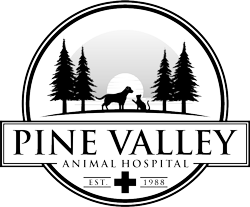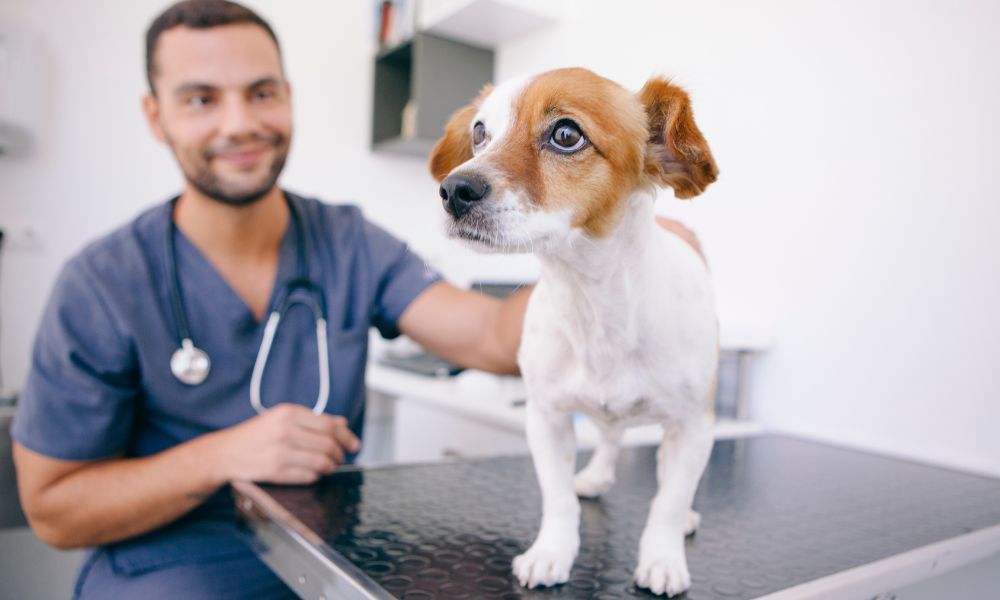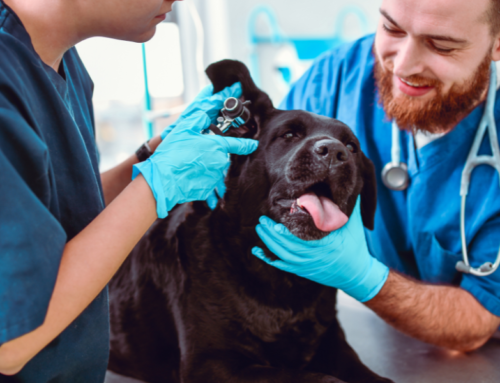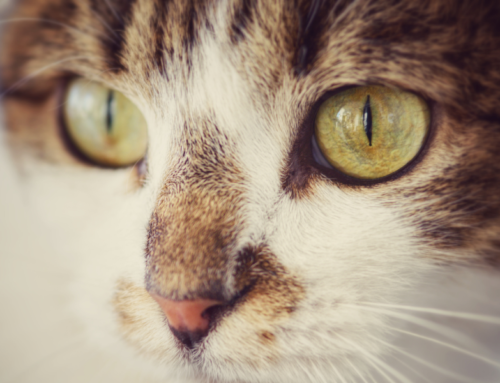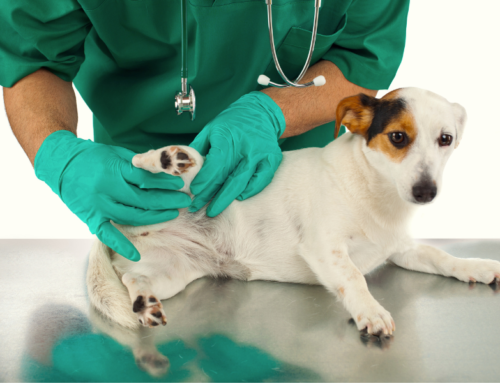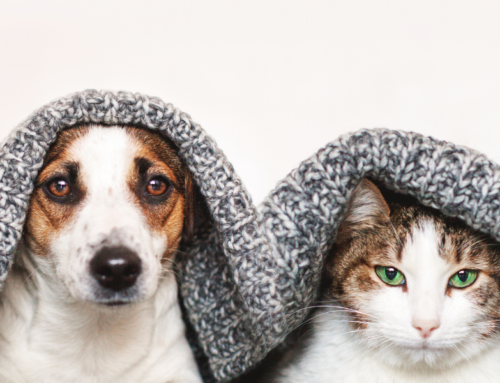Take a step back with us for a moment as we remember those early memories of our school-aged selves. Did you ever dread going to the doctor? If so, experiencing anxiety during a checkup is a common trend among many children and adults. Especially as a young child who cannot fully comprehend the reason for your visit, you likely associated the doctor’s office with sickness, nervousness, and most notably… the dreaded booster shot.
Animals, like domesticated dogs and cats, can experience the same level of uneasiness when going to the vet. They’re brought to an unfamiliar environment where unknown people are examining their bellies, paws, and tails. All the while, they remember the last time they caught a whiff of these unique scents and heard the buzz of fluorescent lights, they felt a sharp pinch in their thigh and felt woozy the rest of the day. As much as we dream they could, pets don’t speak human. We cannot verbally communicate that they are safe and have nothing to fear. Nor will they grow to understand our language and the importance of going to the vet, unlike when a person progresses into adulthood. So how do we help our precious fur babies who are too nervous to go to the vet? How do we convey to them their safety? At Pine Valley Animal Hospital, we believe the answer is found in positive associations, training, and comforting items and medicines.
Helpful Tips For Distressed Dogs
If your sweet pup is anxious during a routine vet visit, they may display a variety of behaviors: from biting and aggression to submissive peeing to panting and drooling. To help your pup overcome their engrained fears, your first step is identifying where their anxiety is stemming from – are they scared of an object, like a lab coat or examination table? Do they not like being touched by unfamiliar hands? Understanding the driver behind their behavior allows you to accommodate their needs and train them appropriately.
For dogs who shy away from the vet’s appearance or touch, handling exercises and desensitization techniques can be valuable for training them out of their visit-related anxiety.
Systematic Desensitization Training
Systematic desensitization is a training method used to reduce a pet’s anxiety in response to an object, situation, or environment. The overall purpose of systematic desensitization is to identify the causes (or multiple causes) of the problem. Pets are then gradually trained to relax in the presence of these uneasy stimulants through positive reinforcement. For example, if your veterinarian wears a white coat, members of your household can start wearing white coats while they pet and play with your pet. Wearing the coat while giving your dog their favorite treat further encourages them to associate the item with delicious tastes and playful memories.
Important Tips for Desensitization Training
- Do not exhaust your pet with long sessions. Instead, repeating short training sessions is the best way to make consistent progress.
- Rewarding desired behavior with treats will encourage a positive training experience. Likewise, never punish or get angry with your dog during the session as this will create negative associations.
Other Helpful Training Techniques
- Teaching your dog to do a standing position. A standing dog is far easier for the vet to examine than a collapsed, non-cooperative fuzzball.
- Training your dog to “go to” their mat or bed. This behavior can be transferred to the examination table or a standing scale.
- Training your dog to do the “touch” technique. This training helps direct your dog’s nose to the palm of your hand, and their head and body naturally follow. Using the “touch” technique can position your dog for an effective vet examination.
Positive Experiences at the Vet
Taking your dog to the vet on a “just for fun trip” encourages them to relate positive memories with the office environment. Fun trips can include nail trimmings or picking up their favorite bag of food or treats.
Take the Right Tools
Before heading to the vet, pack a pile of your dog’s favorite toys and treats. Feeding your dog delicious snacks during their exam will help distract them from their anxious tendencies and build positive associations with the veterinarian environment. For anxious dogs, pheromone treatments or calming treats may be a useful tool for relaxing their nerves. Pine Valley Animal Hospital offers a variety of calming agents and medications available for purchase in our online store.
Helpful Tips For Scaredy Cats
Similar to dogs, cats can experience a range of anxious and fearful behaviors (maybe even more so) during a visit to the vet. Cats are territorial creatures – they like their familiar humans, comforting scents, and warm piles of freshly folded laundry. Training-wise, cats can benefit tremendously from the same types of handling exercises and positive association techniques used for dogs. However, their homebody nature creates a few separate and specific needs. By employing the following techniques, you can help your cat experience the comfort of home during their routine checkup.
Carriers
One of the most important methods for managing your cat’s anxiety is using a suitable and comfortable carrier. The PVAH team recommends using a carrier for travel because it is the safest and most secure way to transport animals to their office visits. The right carrier is warm, cozy, and roomy enough for your cat to stand up and turn around.
To acclimate your cat to their carrier, familiarize your cat with the container by using it at home and remove any fearful or negative associations. You can also add comforting sensory items to the carrier, like a blanket that smells like home, to encourage calmness in your cat. If your cat is troubled by panic attacks when using the carrier, wrap them up snuggly in that same cozy blanket before placing them inside. Covering the carrier with a towel is also a handy technique – blocking their immediate view helps prevent the cat from being negatively provoked by the moving environment outside.
Transportation
When driving to the vet, safety is the most important consideration. Your cat carrier must be locked shut (to prevent a grand feline escape) and securely fastened to the vehicle in case of sudden braking or collisions.
Keep Calm
Talking to your cat in a low and soft voice and using a calm composure will help reassure your cat of their safety and security. Cats are highly perceptive creatures. If you’re experiencing stress, anger, or frustration, they will quickly become anxious and fearful in response. Before traveling to the vet, give yourself enough time for a smooth commute and reward your cat with affection and treats.
Other Strategies
- Avoid feeding your cat at least 6 hours prior to help prevent nausea or vomiting caused by anxiety.
- Use calming agents and medications to relax their nerves before a visit. We offer a variety of calming products available for purchase in our online store.
Our mission at Pine Valley Animal Hospital is to keep your pet happy and healthy for years to come. Routine vet checkups are necessary for their health and maintenance, and we want to make every visit a helpful and positive experience for you and your fur baby. Our dedicated and compassionate team is here to help by answering your questions and advising you on the best solutions to reduce your pet’s anxiety. With our brilliant staff members, family-focused values, and exceptional care, let Pine Valley Animal Hospital be your veterinarian of choice.
